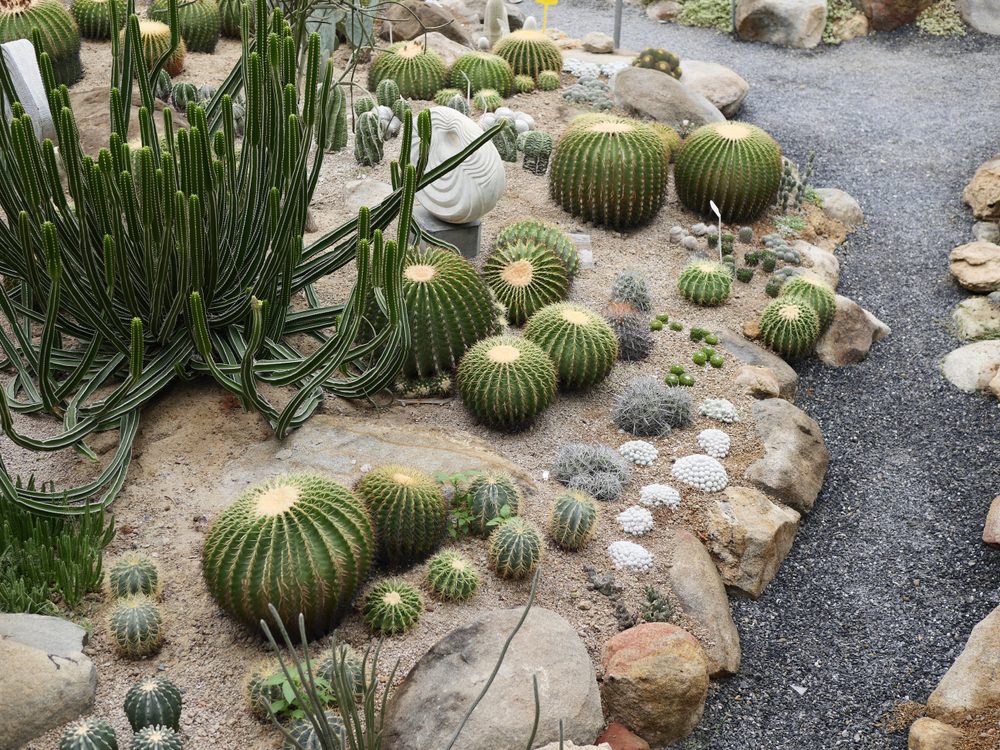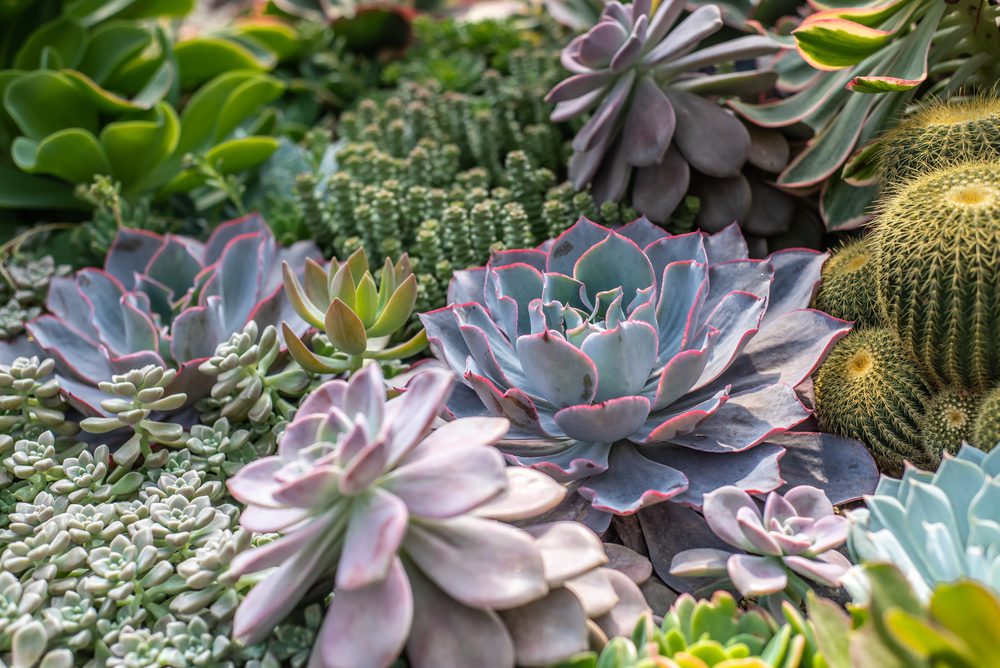I’m sorry to break this to you. Desert landscapes are the THING right now; if you ask me, they’re here to stay. Think about it: you wake up in the morning, put on some shoes to go into your backyard…and there it is: an outstanding visual experience that resembles the desert.
Imagine all that coloration and native flora, and the serene beauty that would come along with it. You might be thinking…ok, desert desert, but I wanted plants in my garden! Well, you should know that many desert dwellers are also great gardeners. So if you’re into this aesthetic, rest assured, you’ve come to the right place!
15 Things to know about desert landscaping
Desert gardening might have a couple of special considerations, but still, the basics you know already still apply. What’s probably more important is to know better your hardiness zones, get to know your soil better, and maybe understand a bit where the light falls and where the winds are strongest.
Why? Because the desert is already known for its extreme temperatures: it is very hot during the day, and chilly at night. So it’s important to ponder on where you can comfortably enjoy your space throughout the day or evening. Don’t worry! It’s not rocket science, as you’ll know what to do just by reading this article.

Desert palettes
Even if desert gardens might lack the lush greens of a cottage or woodland vibe, they still have intriguing color palettes, which are unique in their own climate. Desert sunrise and sunset light have the power of illuminating a garden with extraordinary colors.
There are various ways in which you can integrate bright or subtle colors. You will have to start by exploring all the succulents and their colors, and be sure to integrate the colors of stones and containers in your design too!
The desert landscape palette is more on the earthy side, starting from BEAUTIFUL and warm terra cotta nuances and sandy tones, to cool and breezy blues, grays, greens, and purples, which you can find in succulents, cacti, and desert wildflowers.
Cacti or Succulents?
A lot of people think that cacti and succulents are basically the same things. While cactus is a succulent, a succulent isn’t necessarily a cactus. A succulent can store water in its stems and leaves, which means that it can survive longer without water.
While cacti also store water, you can identify them by the “hairs” that grow from their areoles (those cushiony growths(, and by the fact that they don’t grow leaves. Of course, these hairs that grow on cacti can also be sharp, and some might also produce flowers. Cacti are extremely diverse, as they have a wider variety of sizes and shapes.
Which flowering perennials are tolerant to drought?
There are so many drought-tolerant plants that can live happily ever after in a desert garden! Some of these plants are Russian sage, sedums, Agastache, fountain grass, and even Mediterranean herbs such as rosemary and lavender.
Don’t forget about containers
If you have decided to go for sandy, dry, or rocky desert soil, you might have to go further with the traditional gardening with some containers. These containers can be an amazing choice if you want desert landscaping in your garden because you will have A LOT of flexibility for creative designs.
Imagine that your garden will look just like a Moroccan one! Terra cotta pots have these amazing warm tones, that are great with the greens, grays, and blues of succulents. Also, glazed ceramic pots have more color options and conserve water much better than unglazed ones.
Also, metal pots might hold way too much heat in the desert sun, or they can get too cold at night, so clay pots are always recommended for keeping the soil at a consistent temperature.
Dry stream beds
Dry stream beds will look extremely attractive, but they’ll also help prevent liquid flow and preserve the water.
They can be easily dug into the landscape, but they’ll also work very well for natural slopes and gullies.

Agaves
Have you ever heard of these fleshy blue succulents? They can make a very dramatic statement in your garden, thanks to their large size and chunky leaves. However, the way they look isn’t even the best part, as they are very tolerant of heat and drought.
To mulch or not to mulch
It’s true that using gravel or even stone is a more common replacement for traditional mulch in desert gardens, but SOMETIMES, natural mulch is way better.
If your garden has small trees, their root systems would definitely benefit from the insulating perks of natural cedar or pine mulch. Mulch also has moisture in the soil, which is good for your plantings, and it’s also less expensive than stone.
Oh, and the desert soil!
As you probably know already, desert soils are very sandy and oftentimes dry. You can try adding amendments, but you’d still have to deal with the dry climate. Try to do a little bit of research and find the plants that would be happy in sandy oil.
Also, make sure these plants have shallow root systems. For example, the chartreuse and blue Euphorbia rigida, which is also known as gopher spurge, is a great sprawling ground cover that’s very drought and heat tolerant.
Gravel and stone
By using gravel or stone for walking surfaces, you would definitely achieve the perfect desert landscape.
Gravel and stone allow the soil to absorb rainwater, instead of creating runoff. Plus, largely stones would be even better for a more attractive appearance, especially if it is placed right next to the pointed and spiky shapes of succulents.
Artificial turf
Traditional lawns aren’t easy to maintain, especially in the desert climate, and that’s because they require A LOT of water. However, if you’re dreaming of a lush green lawn, you could also take into consideration artificial turf, which is a very popular landscaping choice, especially in desert climates.
In fact, there are various Southwest landscaping companies that are specialized in this particular feature.

Add a bit of color with native wildflowers
There are various wildflowers that thrive in the desert, and you can easily buy one to plant in your own garden. The coral plant, which is also known as fountain bush or firecracker plant, would color your garden for weeks on a row.
Other brightly-colored options would be Mexican gold poppies, desert mallow, but also desert lupine. These can easily grow from seeds that can be found in your town.
Dramatic yet simple shapes
Trust me, nothing screams “dramatic” like a desert garden. The unusual forms of cacti and succulents, the desert light, alongside the presence of stone and sand make up the perfect garden design.
All you need are three types of plants with different shapes and textures, and a sweet-toned blend of smooth river rock and small boulders, that would create the ideal landscape.
By planting closely, you will save more water
Technically, desert gardens are made to conserve the water, replicating the whole desert vibe: a lot of heat and very little water. That’s why choosing native plants would be a wise choice because these tend to thrive in a place where there’s rainfall.
However, there’s one more trick you could try: planting things close together, so the plants will shade each other while preventing the evaporation of moisture.
If you enjoyed reading this article, we also recommend reading: Safe For Pets? These 7 Houseplants May Or Might Not Be